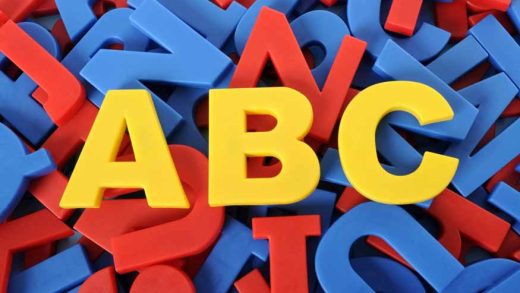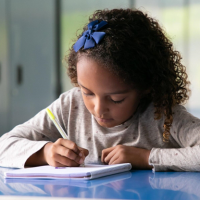As your toddler learns to read, he/she starts by reading out the letters and then trying to blend them in. Take the example of the word “cat,” how does your toddler deal with it? He/she usually starts by reading out the letters “c, “a,” and “t” and then blending them together into “ca….at!” However, for words like “the,” the blending-together process of the letters becomes difficult. But still, after some point, your kids can read it smoothly without even blending letters. How? Because he/she becomes familiar with “the.” It eventually becomes a sight word.
Initial years of reading make pronouncing words easier for every toddler. With proper practice, your kid can even start speed reading and complete novels within weeks! A good practice strategy is, however, needed, and that is where sight words come in handy. Today, we will discuss sight words and their importance.
What are Sight Words?
The sight words are words that your child will recognise simply by looking at them he/she does not need to spell them out. It’s just possible by simply memorising those words. Sight words could be words like “where,” “and,” “there,” “come,” “to,” and many more. Since these words can be recognised by simply looking at them, they are called sight words.
Kids learn by practice therefore, you need to make sure that they practice a lot. Learning sight words is a continuous process; your child will learn simple words in kindergarten and then proceed to learn more complicated words at higher levels while remembering the previously taught ones. In fact, this is the fundamental behind speed reading. At higher levels, words are no longer seen and pronounced out, rather, lines are simply seen and interpreted without reading every word in it.
Characteristics of Sight Words
Sight words are a definite class of words, and not every word can be classified as a sight word. However, as your child grows up, he/she will pronounce every word at sight. The sight words lay the early foundation of such ability. Following are some of the characteristics of the sight words:
- Abundance: Sight words could be found in high numbers in any text. In fact, in simple kid-friendly texts, sight words could be as high as 75 percent of all words in the text. This is deliberately kept in high numbers so that your child has the practice of looking at the sight words more often and ultimately memorising them.
- Unique spelling: Many sight words cannot be pronounced by blending the phonetics of the spelling. These have unique pronunciations, so you must have a good idea about them. For example, the word “said” has a unique pronunciation and is used quite often while speaking and in text.
- Simple: No matter the phonetics, these words are not very complicated. You cannot risk your kid getting exposed to hard words as it will raise the difficulty level so much that your kid will be discouraged from reading. These words are crisp, small in length, and usually simple, like the word “the.”
- Important for composition and reading: Sight words are extremely common in any text. If your kid doesn’t know how to spell words properly, then how can he/she ace the complicated concepts written in upper-class textbooks? Therefore, your kid must know the sight words that will at least lower the effort of reading the text and interpreting it properly.
- Can only be learned through memorisation: Since there is no way to spell the words and blend the letters together, the only way to learn them is through practice and memoris You might want to make a list of these unique words and have your child learn them all by heart.
Where to Find the Sight Words
Even though some sight words are well known, there is more that must be learnt to enhance reading skills. Surely, things would have been better if there was a list compiled by experts to reduce your workload.
There is not one but two different lists of sight words available. One is the revised Dolch list, and the other is Fry’s 300 instant sight words. The list contains sight words for various levels. As your child progresses through each level, he/she will be trained enough to know it all.
Importance of sight words
Teaching sight words to kids has great benefits. Let’s talk about the importance of words:
- Improves reading and writing fluency: Sight words are like the cement holding bricks of sentences together! Your child will soon get this idea as he/she memorises them. Not only that, recognising words at sight will have them read without mumbling and pausing. This ensures good fluency development.
- Better interpretation of texts: Sight words help your child easily make out the overall idea conveyed in the paragraph. He/she can quickly go through the paragraph and interpret the information, which greatly improves his/her analytical skills.
- Improves confidence: Acquiring the ability to read and write fluently is no small achievement. This will not only improve your kid’s academic performance but also increase his/her confidence, which will help him/her in all areas of life.
Acquiring the ability to read and write properly is the first step toward having a strong academic foundation. Additionally, reading and writing well are integral parts of a person’s intellectual awareness. It is an ability that your kid will have to exploit every single day of his/her life. If it is so important, then why not start early? S
Looking for a school to provide your kid with the best learning experience? Kangaroo Kids International Preschool employs one of the most well-trained teaching forces and lays special emphasis on the reading and writing literacy of the students. Stuff like sight words is memorised in the most innovative manner possible. Contact us today to learn more about our curriculum.









